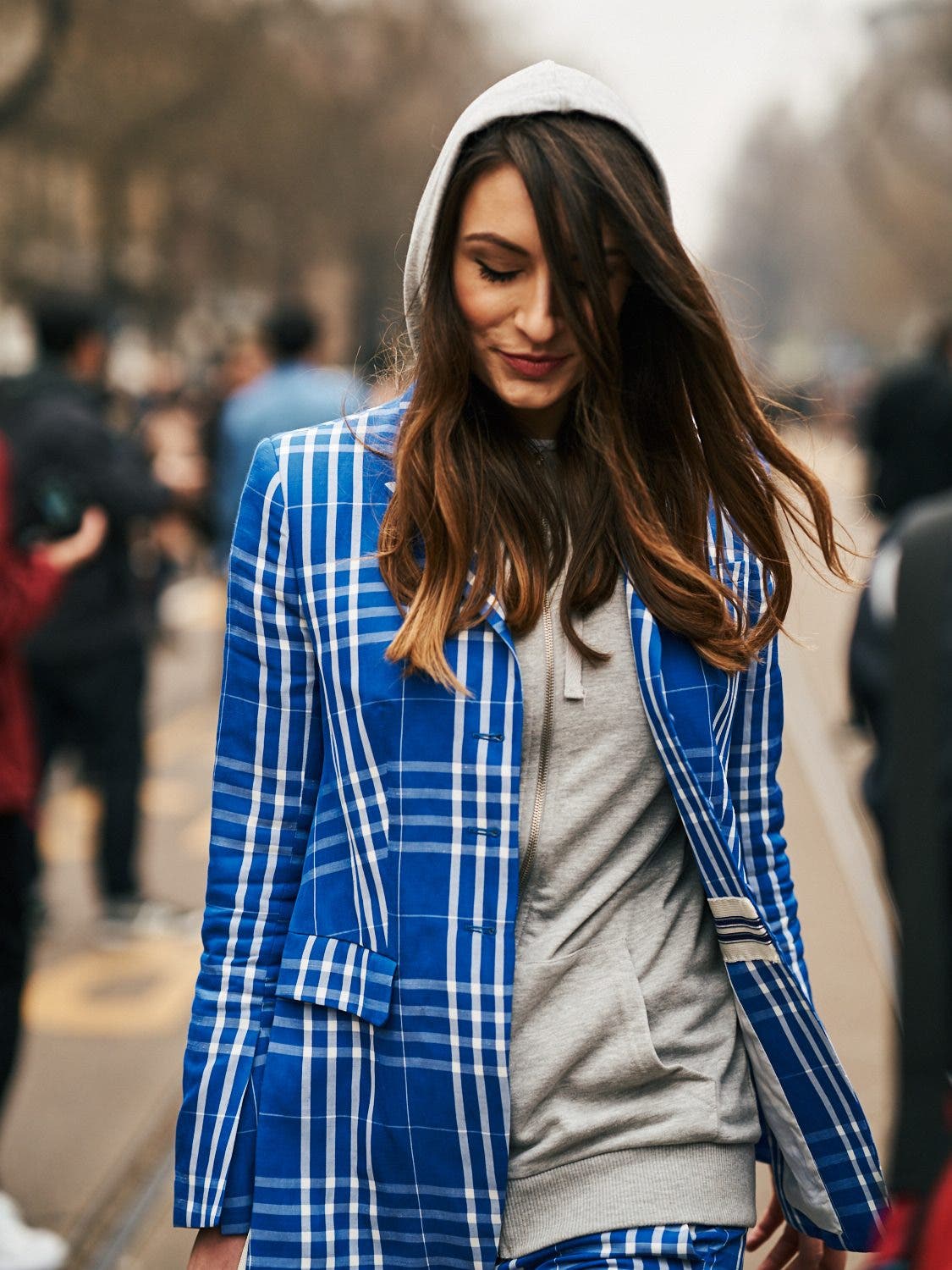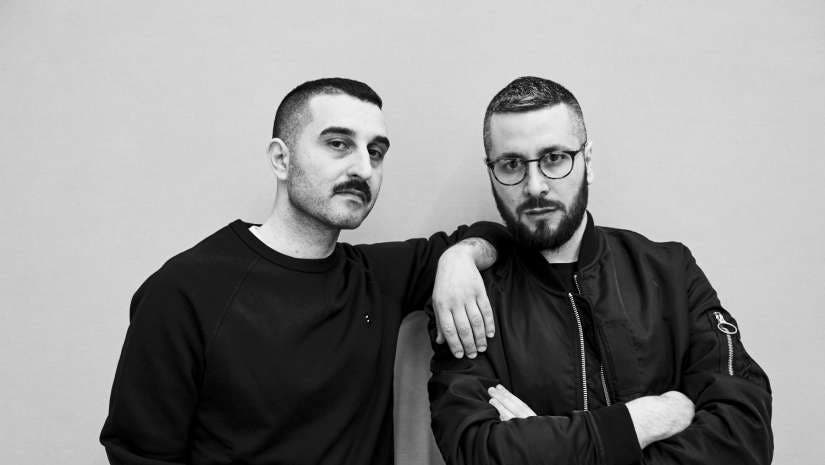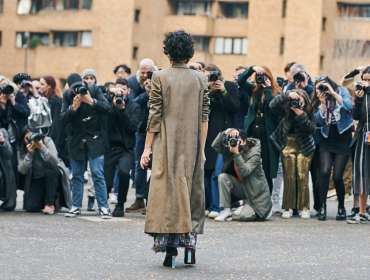In Milan, I had just one focus: to settle in and shoot only traditional portraits using the Carl Zeiss 35mm f/1.4 and the Sony 85mm f/1.4 G Master lens with the A7RII.
(Before I go any further, let me just say that if you’re one of those photographers whose initial reaction to this is, “Why on earth would you shoot portraits with a 35mm?,” I’ve thoroughly answered your question here. For everyone else, please continue.)
When I became seriously involved with shooting fashion week, the 85mm was the king of portrait lenses. While longer focal lengths arguably produce finer portraits, the 85mm is considered to be the perfect balance of length (it’s long, but not too long) and distortion (the best 85mms have virtually none). The 85mm is such a good focal length in fact, that regardless of how cheaply made or expensive it is, the thing will do you service. For my A-mount, I invested in the Carl Zeiss 85mm/f1.4; it is far sharper than the Canon 85mm/1.2 and gives the Nikon a serious run for its money. I would surmise that while that Zeiss’s bokeh rendering isn’t quite as painterly as the Canon, when shooting wide open the bokeh creates some of the most technically perfect circles I’ve ever seen. It produces technically superior images.
(Many enlightened photographers claim not to care about technical greatness and, while I am firmly in the camp that technical greatness does not make a technically great image, I am first and foremost, a technical person at heart. So . . . take that for what it is.)
After a few seasons, however, with the sudden influx of street-style photographers, and the sudden assimilation by fashion media outlets to gravitate toward a particular style of street style image (landscape, wide open, lots of blur, “candid” moments), I found myself swimming in a sea of some really hardcore content creators who were all hellbent on copying the artistic style of one particular photographer. I loved his work; I really didn’t love the invisible pressure of having to shoot like him or suffer the consequences of my work being irrelevant.
Right around this time, I started shooting more fashion shows backstage, where I found the Sigma ART 35mm/f1.4 lens to be my ideal focal length. It was wide enough to catch images in a different way–the portrait was not a strength of the lens, but it was far stronger at capturing the essence of the scene–the mood, the energy. The lens confirmed the affirmation that I was indeed just a fly on the wall. The idea struck me to carry the 35mm out onto the street, but instead of using it indiscriminately, I would use it to capture portraits.
With that, I’m starting with a few images that I captured on the Carl Zeiss 35mm lens. As mentioned in the two previous posts, I was not interested in doing side-by side scientific tests between my E-mount and A-mount gear.
Carl Zeiss 35mm/f1.4

Two things that need to be mentioned off the bat: 1) the Sigma 35mm ART lens for my A-mount is far and away my most heavily used lens out of all of the lenses I own, for any camera. It produces a BEAUTIFUL image, even if the Sony camera would never allow the Sigma lens to be super reliable in the area of autofocus. When using Carl Zeiss 35mm for the smaller Sony camera, the lens feels … different. Not in a bad way. It’s like having a bike for years as a little kid that you rode halfway around the world and back, and then one day your parents buy you a brand new fancy bike. Of course you’re gonna use the fancy bike… but because it’s new and tuned and it doesn’t know you as a rider, you don’t quite know it as a bike in the same intimate way. And 2) specifically with the Zeiss lens, the focal length feels different. I don’t know if I have to stand closer to a subject to take a portrait than with the bigger camera, but it feels that way. And whereas I started taking portraits with the 35mm to introduce some level of discomfort to my subjects so that the images feel something when looking at them, shooting portraits with the Carl Zeiss 35mm on the A7RII makes me feel slightly uncomfortable. I’ve determined that this is probably due to the fact that with the smaller camera/lens combination, there’s less of our faces to hide, and because I’m more aware of my subjects’ presence now, I’m also more aware of the energy between us.
Carl Zeiss 35mm/f1.4




Like the Sigma ART lens for my A-mount though, the Carl Zeiss 35mm for my A7Rii has thus far been my most heavily used lens. It does the things it’s designed to do extremely well, and actually, I find that it handles my particular style of shooting close portraits a little better than the Sigma. The autofocus hit rate, for example, feels much more accurate on the A7Rii than with the Sigma on the A-mount A99. I won’t say that it produces a better image (I would need more time to study images taken side by side; the special characteristics of the Zeiss differ from the Sigma), but for me it natively does what I want with slightly more ease. That said, this lens seems to have more barrel distortion than the Sigma, to the point that I find it difficult to control in post-production editing. If you’re a symmetry freak, this is going to drive you nuts. After London, I pretty much gave up on trying to correct the distortion; the A7Rii’s resolution is so high that I can simply crop out weird corners if necessary. One other thing: I opted for the 1.4 version because I shoot almost all low-available light situations, but the lens has some weight to it. As I’m used to carrying around bigger medium format camera bodies, it doesn’t bother me too much, but I would say, if you’re not shooting specifically for professional clients, you can probably save yourself about $800 and get the f2.8 version of this lens. It’s still a Carl Zeiss, you’re just losing that 1.4 light gathering factor (and maybe a little bit of natural “pop” on some photos. Specifically, if you are an A7S shooter or videographer, don’t even hesitate–go straight for the 2.8 lens. The 1.4 version of the 35mm weighs about 1.5 pounds; the 2.8 copy weighs 4 ounces. That is a substantial difference. If I had to have just one version of the 35mm, the answer simply comes down to whether I am a professional shooter or not, and/or if I am on the A7R camera vs the A7S (the latter has far less photo gathering resolution, so you won’t even get that extra “pop” with the 1.4 copy, just the extra weight!)o
This leaves us with the 85mm.
Now, when Adorama initially gave me the choice of lenses, I had the option of selecting either the Carl Zeiss Batis or the Sony G Master version of this lens. The Zeiss Batis is much lighter, and reportedly has a more assured accuracy rating when shooting action on autofocus. The G Master literally weighs three times that of the Zeiss Batis. Let that sink in for a minute.
I opted for the G-Master because all indications are that this specific lens was born to do one thing: take portraits. Well, I was born to do one thing as well: take portraits! But first, a word on the weight. I wrote in my previous essay that this lens only makes ergonomic sense on the mirrorless Sony if you have a battery grip attached. I would not feel comfortable handling this camera and lens combination without one, the weight distribution is so weird it would feel like a drop or carpel tunnel is inevitable. Beyond that though, let me tell you, this lens . . .
Sony 85mm/f1.4 G Master

This lens is incredible.
Look at the separation between the subject and the background!
Look at that the detail on the subject!
And then the bokeh in the background!
Do you see the little green traffic light?
The 85mm f/1.4 G Master is one of the best combinations of technical sharpness and painted blur that I’ve seen. I own the legendary Minolta Rokkor PG 55mm/f1.2 lens, and it has perhaps the creamiest bokeh I’ve ever seen, but nobody ever accused that lens of being razor sharp–it’s quite difficult for a lens to achieve both so effortlessly.
Sony 85mm/f1.4 G Master





Time after time in every single portrait I captured, the subject looks as if he or she is standing in front of a painted background. Its background rendering is far superior to that of the Zeiss Batis (and really, it’s not even close). But man, the weight . . .
I would say if you’re getting the 85mm to shoot video, or you shoot in a manner that requires you to stop down on your aperture (like say, in a studio, or you’re after landscapes), then the Batis is probably the better lens for you. The G Master also makes absolutely no sense on a handheld gimbal!!! While the G Master is a champion with portraits, it has some limitations beyond just its crazy weight. For starters, it feels like it has the opposite weird effect from my 35mm comparison issue in that with the G Master, I feel like the lens is actually a tick longer than my Zeiss 85mm for the A-mount. I won’t know for sure until I return to New York, but this is something I absolutely will test. Whereas with the new 35mm I find myself getting even closer to my subjects, with the new 85mm I find myself backing further away, perhaps by a full step or so. It’s not a big deal really, but then again for heavy-use photographers switching systems who are used to shooting the same types of things repeatedly, it kind of is. Shooting runway in particular, the longer-feeling distance threw me off and took some getting used to in terms of framing and timing my shots. Sports shooters, please take note. Bottom line though, if you don’t care about technical blah blah blah and you have money to throw and weight is not really a concern? Get the G Master, get the G Master. Get the G Master.
Article written by Simbarashe Che. To Learn More about Simbarashe click here. This article first appeared on the Lord Ashbury blog.






